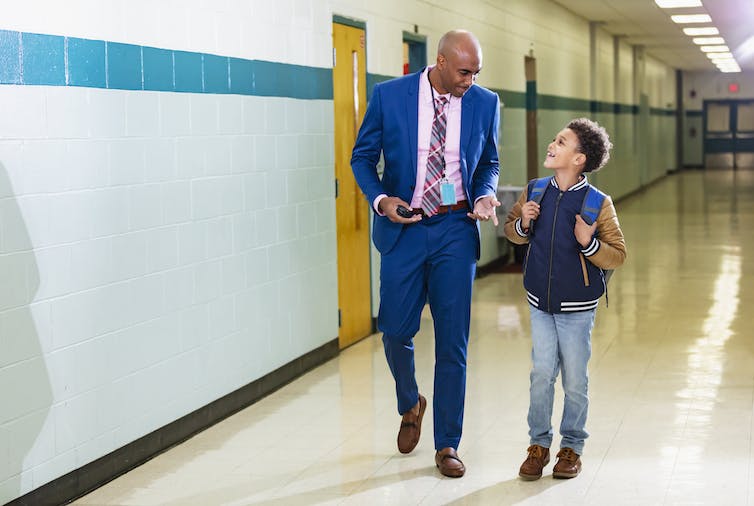For the past 20 years, I have taught research methods in education to students here in the U.S. and in other countries. While the purpose of the course is to show students how to do effective research, the ultimate goal of the research is to get better academic results for the nation’s K-12 students and schools.
Vast resources are already being spent on this goal. Between 2019 and 2022, the Institute of Educational Sciences, the research and evaluation arm of the U.S. Education Department, distributed US$473 million in 255 grants to improve educational outcomes.
In 2021, colleges and universities spent approximately $1.6 billion on educational research.
The research is not hard to find. The Educational Research Information Center, a federally run repository, houses 1.6 million educational research sources in over 1,000 scholarly journals.
And there are plenty of opportunities for educational researchers to network and collaborate. Each year, for instance, more than 15,000 educators and researchers gather to present or discuss educational research findings at the annual meeting of the American Educational Research Association.
Yet, for all the time, money and effort that have been spent on producing research in the field of education, the nation seems to have little to show for it in terms of improvements in academic achievement.
Growing gaps
Even prior to the COVID-19 pandemic, test scores were beginning to decline. Results from the 2019 National Assessment of Educational Progress,, or NAEP – the most representative assessment of what elementary and middle school students know across specific subjects – show a widening gap between the highest and lowest achievement levels on the NAEP for fourth grade mathematics and eighth grade reading between 2017-19. During the same period, NAEP outcomes show stagnated growth in reading achievement among fourth graders. By eighth grade, there is a greater gap in reading achievement between the highest- and lowest-achieving students.
Some education experts have even suggested that the chances for progress get dimmer for students as they get older. For instance, in a 2019-2020 report to Congress, Mark Schneider, the Institute of Educational Sciences director, wrote: “for science and math, the longer students stay in school, the more likely they are to fail to meet even NAEP’s basic performance level.”
Scores on the International Assessment of Adult Competencies, a measure of literacy, numeracy and problem-solving skills, suggest a similar pattern of achievement. Achievement levels on the assessment show a slight decline in literacy and numeracy between 2012-14 and 2017. Fewer Americans are scoring at the highest levels of proficiency in literacy and numeracy.
As an educational researcher who focuses on academic outcomes for low-income students and students of color, I believe these troubling results raise serious questions about whether educational research is being put to use.
Are school leaders and policymakers actually reading any of the vast amount of educational research that exists? Or does it go largely unnoticed in voluminous virtual vaults? What, if anything, can be done to make sure that educational research findings and recommendations are actually being tried?
Here are four things I believe can be done in order to make sure that educational research is actually being applied.
1. Build better relationships with school leaders
Kali9/E+ via Getty Images
Educational researchers can reach out to school leaders before doing their research in order to design research based on the needs of schools and schoolchildren. If school leaders can see how educational research can specifically benefit their school community, they may be more likely to implement findings and recommendations from the research.
2. Make policy and practice part of the research process
By implementing new policies and practices based on research findings, researchers can work with school leaders to do further research to see if the new policies and practices actually work.
For example, The Investing in Innovation (i3) Fund was established by the American Recovery and Reinvestment Act of 2009 to fund the implementation and evaluation of education interventions with a record of improving student achievement. Through the fund, $679 million was distributed through 67 grants – and 12 of those 67 funded projects improved student outcomes. The key to success? Having a “tight implementation” plan, which was shown to produce at least one positive student outcome.
3. Rethink how research impact is measured
As part of the national rankings for colleges of education – that is, the schools that prepare schoolteachers for their careers – engagement with public schools could be made a factor in the rankings. The rankings could also include measurable educational impact.
4. Rethink and redefine how research is distributed
Evidence-based instruction can improve student outcomes. However, public school teachers often can’t afford to access the evidence or the time to make sense of it. Research findings written in everyday language could be distributed at conferences frequented by public school teachers and in the periodicals that they read.
If research findings are to make a difference, I believe there has to be a stronger focus on using research to bring about real-world change in public schools.




